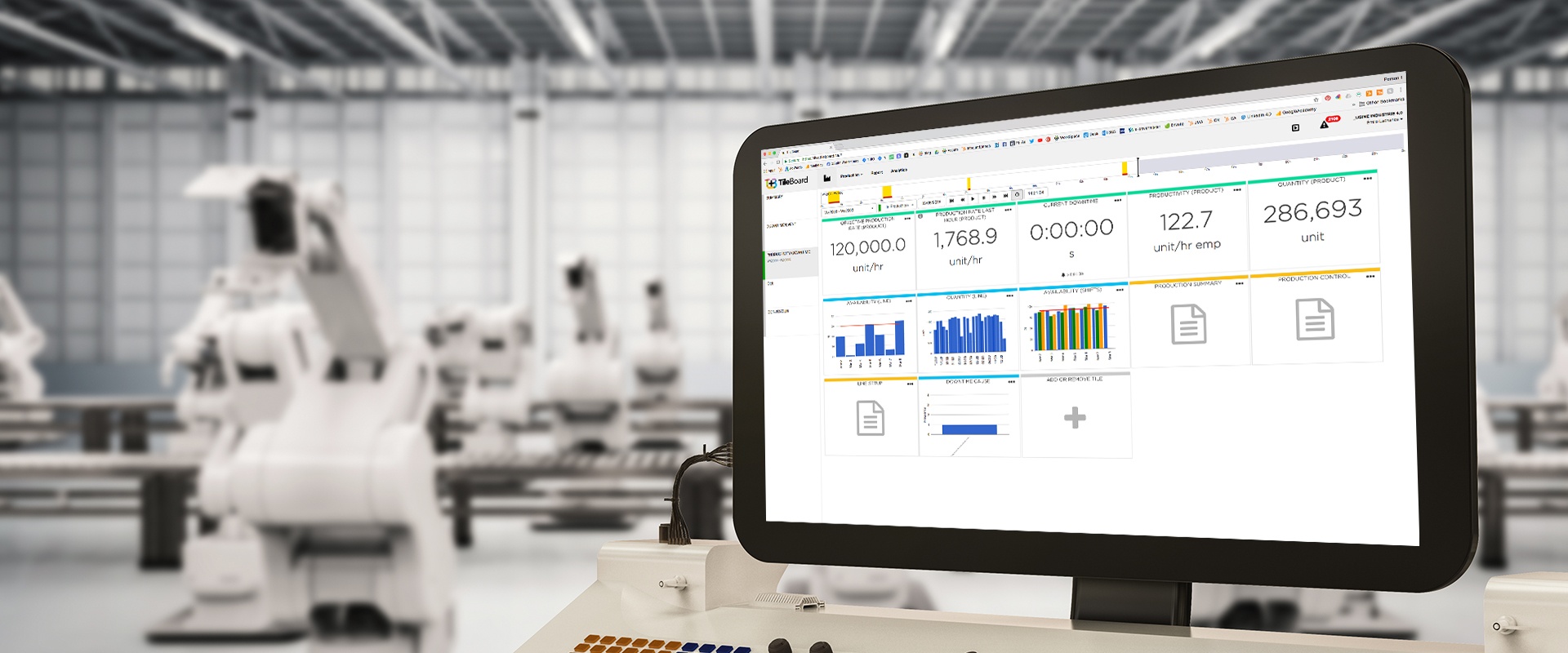We use the term Internet of Things or IoT to describe connected computers, devices and objects that collect and share data. The IoT is about “intelligent” devices “talking” to each other without requiring human intervention after the initial setup. The Industrial Internet of Things (IIoT) applies the IoT concept to manufacturing, connecting devices in a factory or on the shop floor. Discussions about the IIoT and Industry 4.0 can quickly expand into the potential benefits of massive connectivity, but IIoT projects don’t have to be huge to show a benefit, and they’re not just for the biggest players in the industry.
PREPARED BY Karen Smock, Freelance Writer
An IIoT solution can be as simple as using a sensor to count units per hour moving past a certain point on a conveyor, and then sending that data to a screen on the production floor and to a manager’s smartphone. That system is essentially replacing the manual method of a person counting, keeping track on a clipboard, copying the number onto a whiteboard, and entering the number into a spreadsheet. By automating data collection and sharing the data in real time, you can join the ranks of manufacturers taking advantage of Industry 4.0.
IIoT solutions are accessible to SMBs
Small and medium size manufacturers in a variety of industries including food & beverage can benefit from an IIoT implementation. Assuming that IIoT projects are out of reach can be a costly mistake for SMBs. As the Industry Week article, Smaller Manufacturers Can’t Afford to Dismiss the IIoT says, “Though many small and midsized manufacturers may view adopting the IIoT as an onerous and expensive project, implementing these technologies will not typically require a significant financial investment.”
The costs of not implementing IIoT solutions can include unnecessary waste, decreased quality, preventable downtime, and strategic missteps based on incomplete data.
Promoting continuous improvement
One example of a connectivity solution that impacts continuous improvement is automatically tracking downtime. Capturing the reasons for every downtime event and making the data available allows supervisors and maintenance leads to filter the information by cause, frequency, and length to see which causes require corrective action. The action plan to solve the problem, along with deadlines and the team responsible can all be linked together. Everyone, including upper management, can immediately see what corrective action is taking place, and who is responsible. By collecting downtime reason data and centralizing corrective action information, you can establish a baseline and accurately track the progress of continuous improvement programs.
3 examples of food & beverage manufacturers
benefiting from IIoT solutions
Downtime monitoring is just one example of how an IIoT solution can minimize costs. Other solutions for small and medium businesses include production monitoring and real-time visibility.
- Amalgamated Dairies implemented a productivity and downtime IIoT solution using just 5 sensors. With real-time monitoring, their results included 7% gains in uptime, a 15% decrease in average downtime, as well as reduced direct labor costs.
- Baking industry leader Premiere Moisson added sensors on 2 lines to monitor productivity and saw a 27% improvement in downtime responsiveness, and a 3% productivity gain. The insights gained from monitoring helped inform decisions about increasing production capacity.
- Viau Food Products started using productivity, downtime and yield analytics suites with 9 sensors and was able to optimize yield and reduce overproduction. Their Chief of Operations says that the manufacturing intelligence they’ve built with data and analytics helps them identify business opportunities.
While the KPIs of downtime, productivity, and yield can quickly show the benefits of an IIoT solution, improved data quality and visibility can really make an impact in the long run, influencing key business strategies and investments.
Learn more about continuous improvement monitoring solutions here.
















